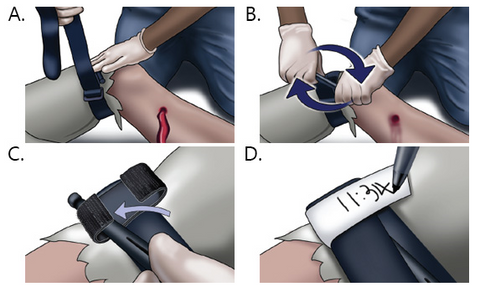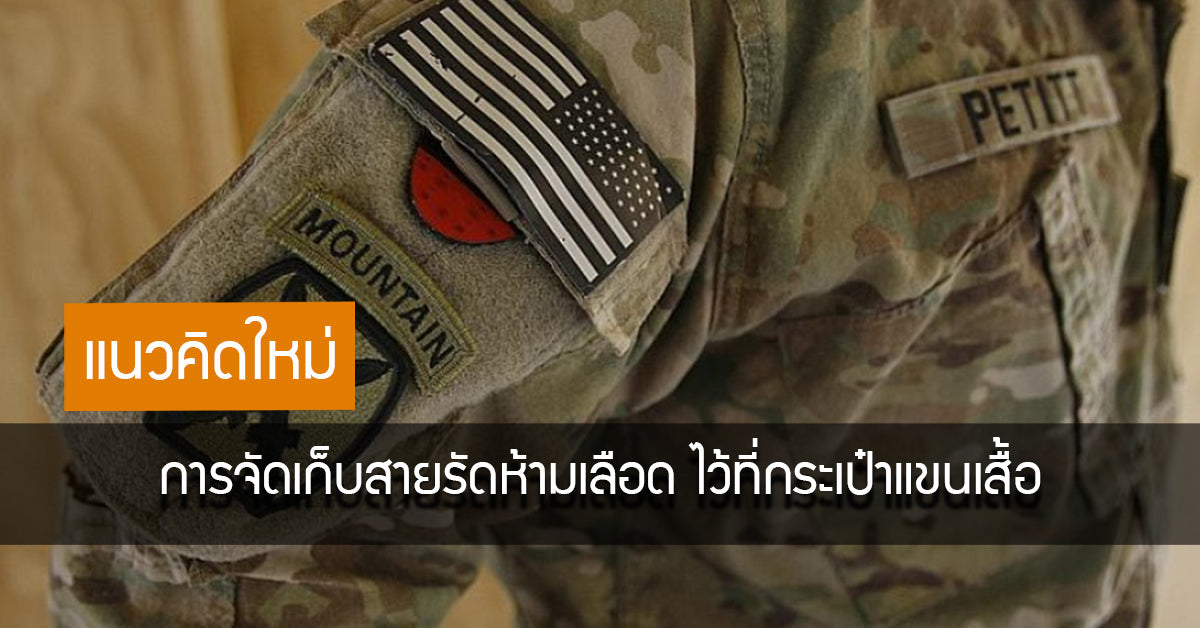Efforts to find and improve the format
To reduce the risk of death among military personnel on the battlefield.
From the constant bombing incidents

3rd Assault Brigade, 10th Mountain Infantry Division or
10th Mountain Division's 3rd Brigade Combat Team
I have searched until I found and brought a method for storing tourniquets.
In a new format, it will be applied as a unit practice.
Providing all personnel on missions with tourniquets to stop bleeding
Place it in the right sleeve pocket with the end of the strap hanging out and attached to
The Velcro patch on the outside of the arm pocket reveals the red-dotted end of the strap.

25th Artillery Regiment, 4th Battalion or
4th Battalion, 25th Artillery Regiment
I have seen the deployment of forward units on the battlefield and agree with the idea.
and changes that address the problem
And there were orders for personnel to adjust and use the same storage methods.
Within a week, the end of the red wire could be seen on his right arm.
On the uniforms of all personnel at the base

"It doesn't seem like a big change, but it's very effective."
Commander of the 3rd Assault Division
Senior Master Sergeant Jimmy Carabello, who initiated the idea, said:

Normally, every soldier will have a tourniquet (TQ).
Always carry one Personal First Aid Kit (IFAK) with you.
And usually keep the second spare line in the trouser pocket on the thigh.
Or a pocket at the end of the pants at the ankle
With the destructive power of the bomb, it became a dark joke that
Personnel who encounter improvised explosive devices lose their tourniquets.
Along with their legs
Corporal Garrick Maughanwick, Air Ambulance Sergeant, assigned to
The 52nd Aviation Regiment, 1st Battalion confirmed that
During his service in Afghanistan
He treated more than 100 soldiers who lost their legs to improvised explosive devices.
And said, "Mostly lacerations
More than one tourniquet is often used."
"Adjusting the way tourniquets are carried
Come and stand at the right arm of every soldier.
Enabling me, the soldiers and other medical personnel
Help them more quickly
Because I know where to get a tourniquet."

More than 90% of military casualties on the battlefield are due to
Severe bleeding injuries that do not receive first aid to stop the bleeding
Even though losing limbs is unavoidable when exposed to a bomb,
But the timely stopping of the bleeding became an advantage, saving the lives of the soldiers.
To deliver the equipment to the specialists in the area.
and the advanced medical science of today
Helps reduce the risk of death from a dramatic turnaround
Source: https://www.stripes.com/news/middle-east/afghanistan/10th-mountain-brigade-changes-tourniquet-policy-1.147680
Article: 10th Mountain brigade changes tourniquet policy
Translated by: Thithat Rinchai on January 13, 2021


